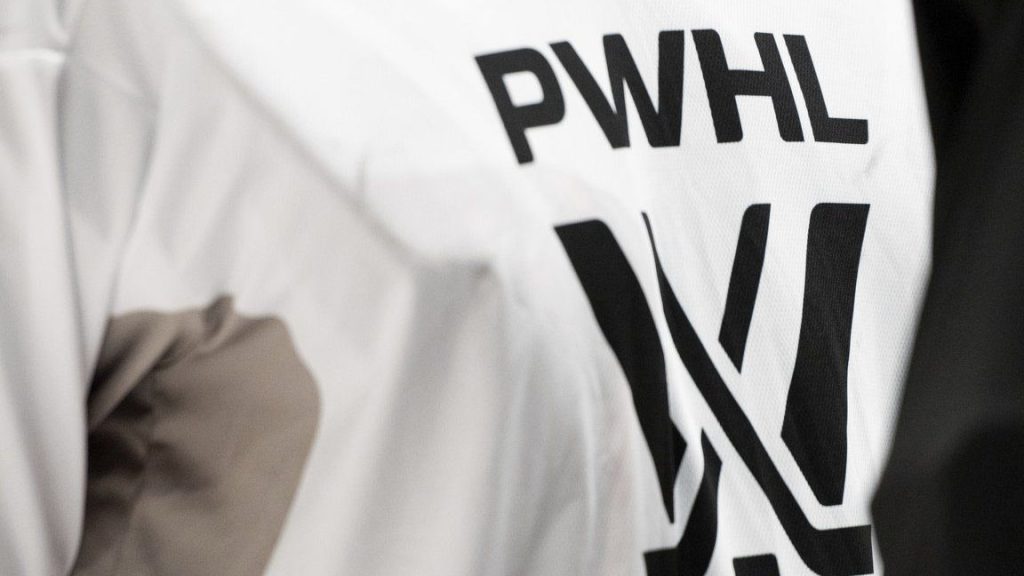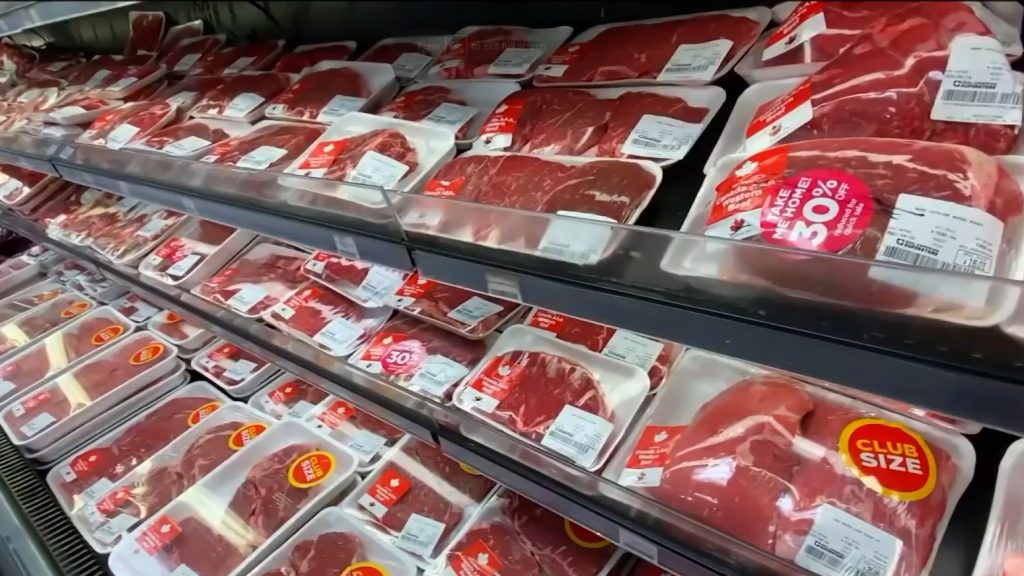PWHL announces unique playoff format, puts aside talk of expansion

Posted February 28, 2024 9:47 pm.
The Professional Women’s Hockey League was bold out of the gate.
From a forward-thinking points system to the so-called “jailbreak” where a short-handed goal frees penalized players, the first-year circuit hasn’t been afraid to think outside the box since hitting the ice New Year’s Day.
It’s no surprise the PWHL’s playoff format and draft process are following a similar template.
North America’s first united women’s league announced Wednesday four of its six teams will make the post-season — with a twist.
The No. 1 seed gets the option to choose its semifinal opponent from the third- and fourth-place finishers for the five-game series.
“Another way to be innovative and creative,” PWHL senior vice-president of hockey operations Jayna Hefford said on video conference call with reporters to mark the season’s midway point.
“That No. 1 team may look at a more favourable travel schedule, they may look at a better matchup against the team. It’s really up to those (general managers) and coaches to determine. I think that adds another element of engagement for our fans.”
The No. 2 seed has home-ice advantage secured in the semis. The championship series will also be decided in a best-of-five format.
GOLD PLAN AIMS TO STOP TANKING
The PWHL, which features teams in Montreal, Ottawa, Toronto, Minnesota, Boston and the New York metropolitan area, also announced it will implement the “Gold Plan” for its second-ever draft.
Proposed by statistician Adam Gold more than a decade ago, the system rewards success once a team is eliminated from post-season contention. The goal is to both have something to play for and stop clubs from tanking for the top pick.
“There’ll be a different type of race,” said Hefford, a five-time Olympic gold medallist for Canada and a Hockey Hall of Fame inductee. “Every game from that point on means something and it earns them points. We felt like it was another way to continue to engage our fans in a different way than maybe they’ve seen elsewhere.”
The PWHL draft will be held in mid-June with seven rounds and 42 selections.
“It’s still weighted, obviously, towards the team that is eliminated first,” Hefford said of the format. “But it’s not simply just a lottery system. We really liked the idea that the performance of the team could also get them to that first draft pick.”
The PWHL, which uses international hockey’s 3-2-1 point system in the standings, has got off to a roaring start with plenty of fan interest and a big TV deal coupled with competitive, physical play.
“What an amazing two months this has been,” said Stan Kasten, one of the PWHL’s advisory board members. “We’ve exceeded everyone’s expectations, especially mine. I knew we were on the right track, I knew we had the right people, I knew we had the right product. But the way it has been accepted by fans — by the marketplace — has been extraordinary.
“Way beyond our expectations.”
Attendance has been impressive in Canada, including a record-breaking crowd in Toronto earlier this month for the “Battle on Bay Street” against Montreal at Scotiabank Arena, home of the NHL’s Maple Leafs.
Kasten acknowledged there have been challenges, including concerns in the New York and Boston markets, as the league looks to build on its flying start.
New York, for example, is averaging a league-low 2,218 fans while splitting its four home games between Bridgeport, Connecticut, and the NHL Islanders home, UBS Arena. Boston has the league’s second-lowest attendance average at 3,352, while playing out of the University of Massachusetts-Lowell’s Tsongas Center, located about a 45-minute drive outside of Boston.
“We still have a bumpy road in front of us until we’re a fully formed thing, but we are on track,” said Kasten, who is also president and CEO of Major League Baseball’s Los Angeles Dodgers. “We’re certainly ahead of our own projections, both in terms of the product that we have, and the business arrangements that we have, and the sponsorships that we have.
“It really has been extraordinarily gratifying in two countries.”
Hefford credited the league’s leadership, which includes Kasten and tennis great Billie Jean King, for a level of expertise and financial backing that hadn’t previously existed in North American women’s hockey.
Having all the best players under one umbrella also hasn’t hurt the PWHL’s early returns.
“We’re seeing this demand around women’s sports around the globe,” Hefford said. “We knew the demand was real. But to see it come and experience it the way we have has been really incredible. We’re at a point in time where the demand for women’s sport and women’s hockey is something unlike we’ve seen before.
“We’re going to continue to work hard every day to keep that momentum going.”
EXPANSION PLANS ON HOLD
As for expansion, the PWHL is putting that off for at least next season, while placing a focus on scheduling more neutral site games to test various markets. This season, the PWHL is already having games played in Pittsburgh and Detroit, both scheduled on March 17.
“Every market we go in, it’s an opportunity for us to understand what that market looks like and to expose our league to a new market,” Hefford said. “Somewhere down the road expansion will be contemplated, but in advance of Season 2, I would say no to those things.”
Nicknames and team logos are also on the horizon, though Kasten was unable to say when those might be announced. The PWHL delayed its launch of releasing individual nicknames and logos in part after fans pushed back on some initial renderings and names that became public through patent requests filed by the league last year.
One aspect that won’t be changing anytime soon, PWHL advisory board member Stan Kasten said, is the league re-assessing its player salary structure, ranging from $35,000 to $80,000, not including bonuses.
“Re-opening the a collective bargaining agreement one year into an eight year deal does not sound likely,” Kasten said in noting that while revenues two months into the league’s first season have exceeded expectations so have expenditures.
“We still have a long way to go until we are an economic success,” he added.
The PWHL is already having an impact on the international women’s hockey schedule.
Hefford announced both USA Hockey and Hockey Canada have agreed to suspend their traditional pre-Olympic residency programs in advance of the 2026 Milan Games to not conflict with the start of the PWHL season.
Both federations previously held six-month camps leading up to the Olympics, which would have led to national team players being ineligible to play in the PWHL until after the Winter Games.
Files from The Associated Press were used in this report








